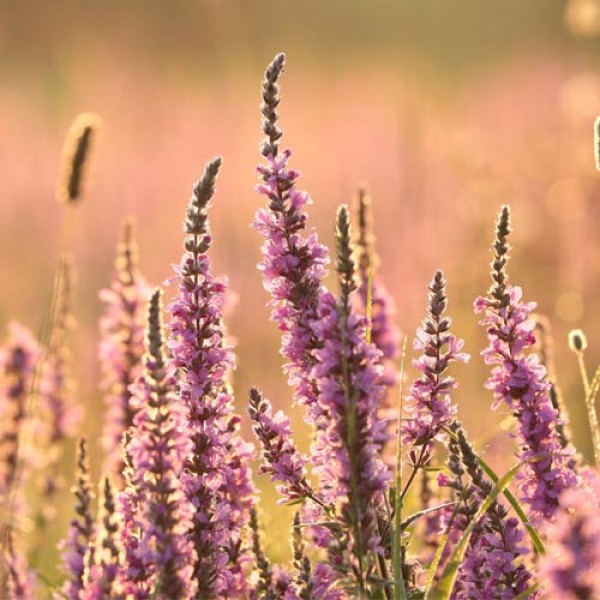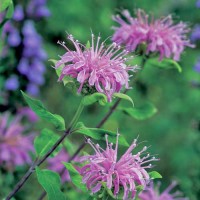
Purple loosestrife - perennial of the year 2024
The bright perennial loosestrife is a wonderful addition to the perennial garden. From purple to delicate white, it can be found in a beautiful colour spectrum of pink and purple tones. It deserves to be named a 2024 perennial because, in addition to its wonderful colour, it also attracts micro-organisms, bees, butterflies and other beneficial insects that bring any garden to life.
Interesting facts about the purple loosestrife:
The robust purple loosestrife grows to a height of 35 - 70 cm and has bright flowers in shades of purple or pink. Its favoured habitat is soil that is permanently slightly moist or loamy, close to small streams or rivers or in large meadows that also have moist soil. It needs sufficient nutrients to grow, but can also survive for a while without additional water during dry periods if the soil has sufficient storage capacity and residual moisture.
Most varieties of loosestrife self-seed and if you don`t take care, it will soon be the sole ruler of the bed in suitable places in the garden. The flowering period is from July to September and you can`t miss it in the garden at this time.
Purple loosestrife in a natural garden:
The loosestrife varieties, which have been honoured with awards, and the loosestrife or other loosestrife species available in perennial nurseries are ideal for the natural garden.
If you want to orientate yourself to the loosestrife`s natural habitat, stick with the purple loosestrife, as this is a native species, while the switchgrass is increasingly found in Italy, southern Europe and western Asia. The two species are very similar in their requirements, as they both need a sunny location with moist, nutrient-rich soil. They can tolerate semi-shady spots, but do not prefer them. The perennials are frost-hardy and feel very much at home in the garden. The only advantage of the loosestrife could be that it grows rather delicately and does not usually self-seed, so there is no need to worry about it spreading throughout the garden.
However, if you are looking for another positive aspect of giving the loosestrife plenty of space in the garden, you will quickly find it. The perennial is a real magnet for micro-organisms, butterflies, bees and beneficial insects, which feed on the flowers of the colourful perennial. If a caterpillar occasionally gets lost in the perennial, you can also leave it on site. Because it`s good to know: Other animals don`t like the leaves of the loosestrife and the damage caused by a caterpillar is easy for the plant to cope with, especially when you think of what a wonderful butterfly this caterpillar will become.
Planting partner for the purple loosestrife:
As an ideal planting partner for loosestrife, you can follow nature`s example and plant wood angelica, meadowsweet or water azalea in the immediate neighbourhood. Alternatively, you can take into account the requirements of the location and choose plants that prefer loamy and moist soils, such as: red angelica, umbrella asters, marsh yarrow or Himalayan silge.
A summary of the purple loosestrife:
The purple loosestrife loves:
- Sunny to semi-shady places
- Soils that are loamy, moist or swampy
- Shore zones of ponds or streams
- Soils that offer plenty of nutrients
- To be planted in the period from spring to autumn












